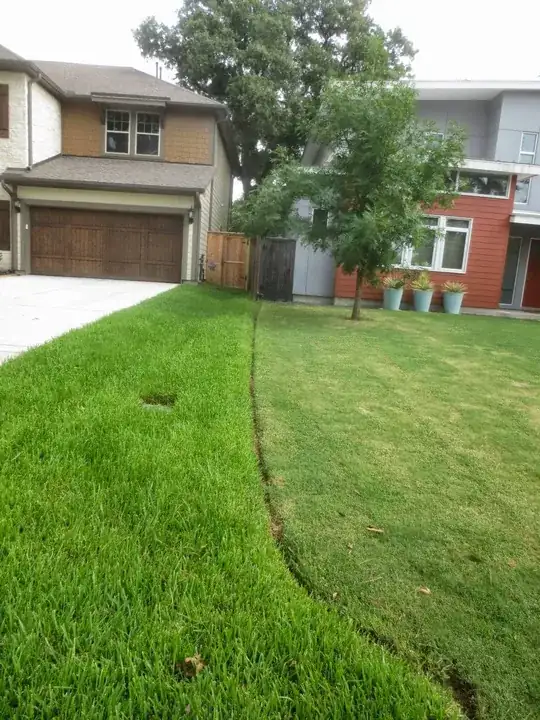That line on the lawn (from the pic you provided) is the property line, and yes, those are different grasses. The one on the left appears to be St. Augustine grass, while the one on the right is almost pure Bermuda grass.
In Europe, you won't be growing either of these, but you can get the same effect, using different colors and textures off cool season lawn grass. Like using a wider bladed, lighter hued tall fescue, such as KY-31 (mowed a little higher for effect) to contrast against a well groomed perennial rye lawn, such as Blackcat II (with a very dark, narrow blade and dense habit). There are others you could try as well (some fine fescues contrast well, especially with tall fescues, because of the huge difference in blade width.
Just be aware of the growth habits of the species you choose. All lawn grasses tiller, and spread slowly that way (thus the shallow trench dividing the two types), but some grasses (eg Kentucky Bluegrass) spread quickly by stolon, and that will be counter-productive. Some new rye grasses do this also, and are advertised as 'self-repairing' or similar. Avoid those.
